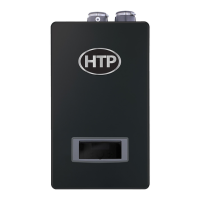10
LP-520 REV. 5.1.17
• Always verify proper operation after servicing the appliance.
E. WATER CHEMISTRY
Chemical imbalance of the water supply may affect efficiency and cause severe damage to the appliance and associated equipment.
Water quality must be professionally analyzed to determine whether it is necessary to treat the water. Various solutions are available to
adjust water quality. Adverse water quality will affect the reliability of the system. In addition, operating temperatures above 135
o
F will
accelerate the build-up of lime scale and possibly shorten appliance service life. Failure of an appliance due to lime scale build-up, low
pH, or other chemical imbalance IS NOT covered by the warranty.
The water must be potable, free of corrosive chemicals, sand, dirt, and other contaminates. It is up to the installer to ensure the water
does not contain corrosive chemicals or elements that can damage the heat exchanger. Potable water is defined as drinkable water
supplied from utility or well water in compliance with EPA secondary maximum contaminant levels (40 CFR Part 143.3) as shown in the
table below. If the water contains contaminants higher than outlined by the EPA, water treatment is recommended and additional, more
frequent maintenance may be required.
If you suspect that your water is contaminated in any way, discontinue use of the appliance and contact an authorized technician or
licensed professional.
Total Hardness
(Residential Use - Below 140
o
F water
temperature)
200 mg/l
(12 grains/gallon)
Total Hardness
(Commercial Use - 140
o
F and above
water temperature)
120 mg/l
(7 grains/gallon)
Total Dissolved Solids (TDS)
Dissolved Carbon Dioxide
(CO2)
Table 2 – Water Chemistry Specifications
F. FREEZE PROTECTION
Consider appliance piping and installation when determining appliance location.
NOTE: Damages resulting from incorrect installation or from use of products not approved by
HTP, Inc. ARE NOT covered by warranty.
G. SCALDING
This heater can deliver scalding water. Be careful whenever using hot water to avoid scalding
injury. Certain appliances, such as dishwashers and automatic clothes washers may require increased water temperature. By setting
the thermostat on this heater to obtain the increased water temperature required by these appliances, you may create the potential for
scald injury.
To protect against injury, you should install a mixing valve in the water system. This valve will reduce point of discharge temperature by
mixing cold and hot water in branch supply lines. Such valves are available from your local plumbing supplier.
Table 3 – Time and Temperature Relationship in Scalds
APPROXIMATE TIME / TEMPERATURE RELATIONSHIPS IN SCALDS

